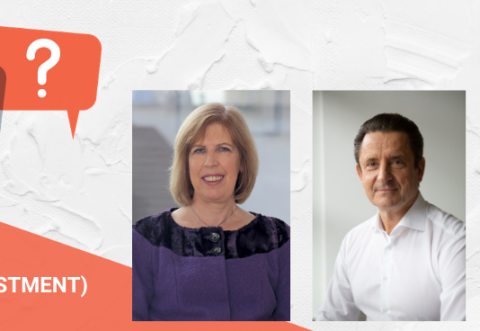Q #1 What is the difference of the High-Level Forum report to previous initiatives on the Capital Markets Union? What is different this time around?
First of all, the circumstances of this report are different. While at the beginning of the work of the group Brexit was a strong focus, half way through COVID 19 offered fresh impetus. This time there was also an agreement that a Capital Markets Union was needed to complement bank lending, not compete against it. With a decline in bank-based financing, SMEs are struggling to raise capital necessary to create jobs and growth. At the same time, addressing the challenges regarding pensions and climate change has become more urgent. But more importantly, the perspective has changed: up until now, the EU institutions’ goal to boost, broaden and deepen European capital markets has largely been centred on capital raising and market infrastructure, so the focus on where that capital is coming from is very welcome.
Our approach was very broad, covering financing issues for SMEs as well as market infrastructure topics and the removal of obstacles to cross-border investments. We sought to be more specific and practical than many previous reports on the subject. We all agreed that the inclusion, within the group, in the report, and going forward, of the investors’ perspective is not just a nice to have, but rather indispensable to create a mutually reinforcing system: There was a strong feeling within the group that we need to develop a CMU that supports European citizens and is at the same time supported by European citizens.
Our understanding is that each section of the report will reinforce activity in others. It is not a pick and choose. The recommendations form an integrated package with key measures to create a savings and investment Union and promote sustainable development benefitting EU citizens and investors, companies and markets.
Q #2 Where do you see the opportunities for the asset management industry?
The fact that this time there is a focus on investors in the report is very helpful, potentially supporting our business by seeking ways to encourage individuals to take money out of bank accounts and to invest – and we recognise this will also mean looking at our own distribution channels and processes.
We need to explain that this is not just about throwing products and information in the form of documents or comparison tables at them. It is about supporting and encouraging them and responding to their wants and needs. To achieve this, we all need to understand better how individuals behave and what they expect from us.
This will also require us to speak to them in a language that they can understand and want to engage with – and the regulations need to allow us to do that. We need to develop much greater financial literacy – and get people to talk about money. The report rightly recognises that people need support and advice which is accessible, reliable, trustworthy and of high quality.
We need advisers and planners who demonstrate their professional skills and competence, including by meeting minimum qualification requirements. Only at this stage in the process can we start talking about the right solution to achieve an individual’s financial aspirations – be it first and foremost an effective private pension scheme or saving for education fees and purchasing property.
Q #3 And what are the challenges?
CMU is of course not only about raising capital from investors, but also channelling these investments into companies. Asset managers play a pivotal role in this. Particularly in the context of the Covid-19 crisis recovery, we see a policy trend to making it easier for companies, especially SMEs, to raise capital by e.g. lifting reporting requirements and allowing special voting/share schemes.
While we need to make sure that the administrative burden is not excluding companies from capital markets, we also should not lose sight of the necessity to receive the information we as asset managers need in order to provide high quality investments to our clients, fitting their needs and preferences, including sustainability factors. Finding this balance will be of key importance for the near future.

























